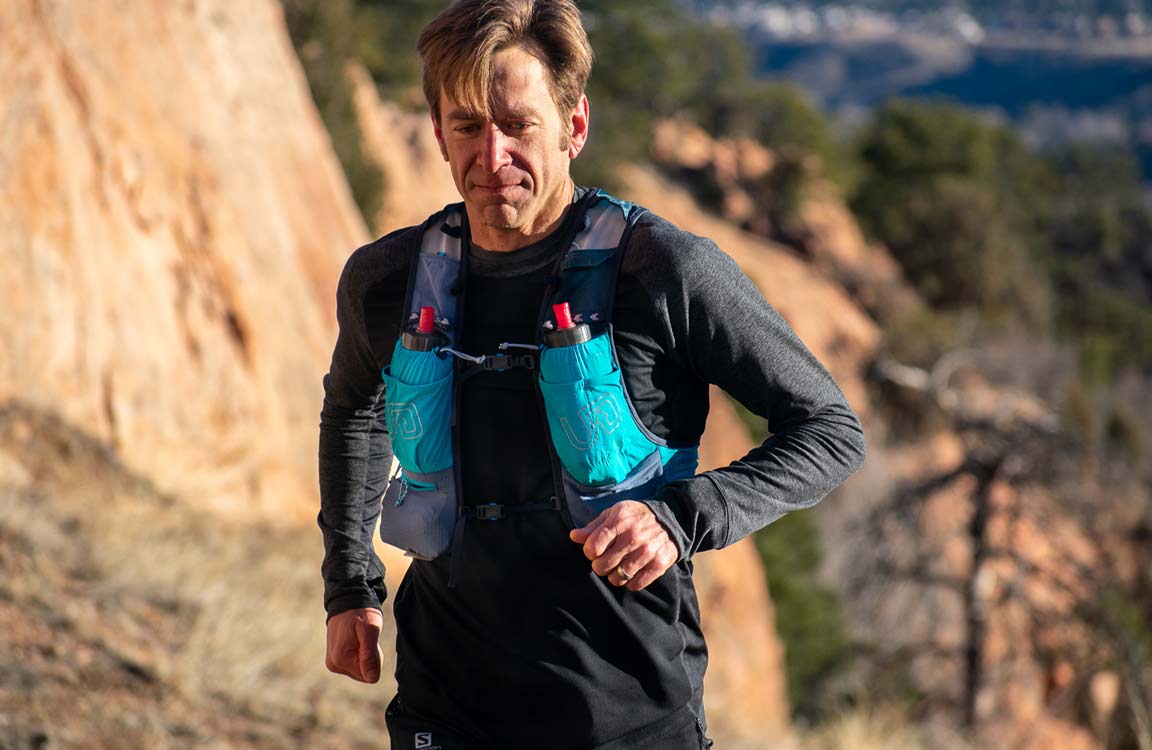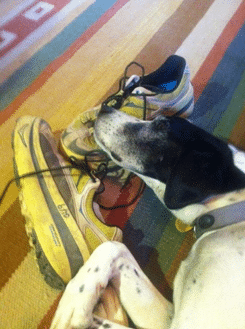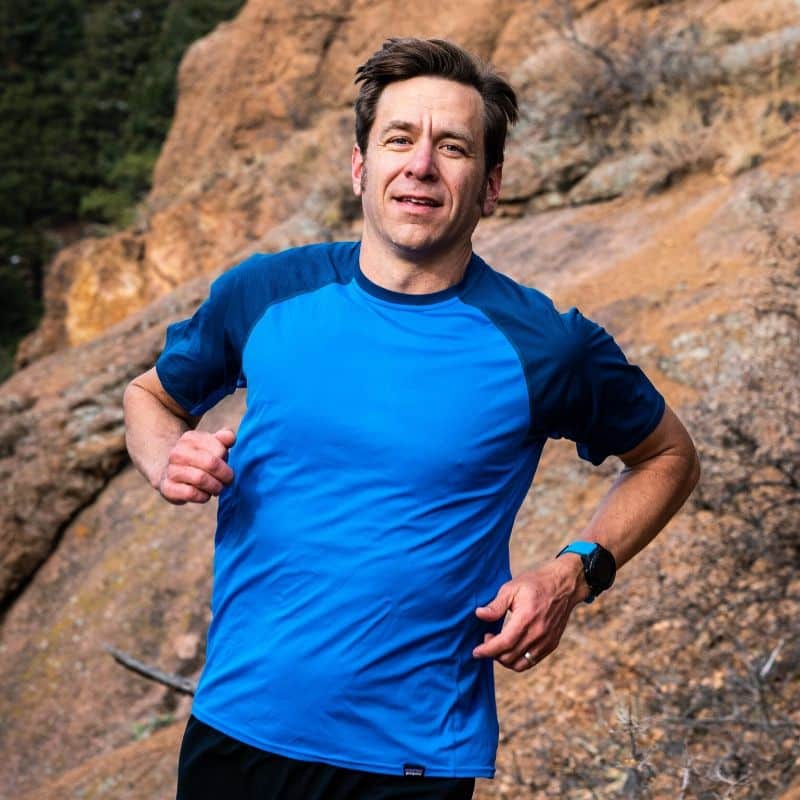
What We Learned in the Last Decade to Make Ultrarunners Faster in the Next One
By Jason Koop,
Head Coach of CTS Ultrarunning
As we’re about to embark on a new decade, I took some time to reflect on what I’ve learned over the last 10 years. I milled through my e-mails (complete with ‘Sent from my Blackberry’ signature lines), took a look at the now obsolete ULTRA Listserv and thumbed through back issues of Ultrarunning Magazine. The themes that cropped up were sometimes surprising and at other points embarrassing (as in, ‘I can’t believe we used to do that’). Below are some of the themes that particularly stood out to me, and what athletes can take away from them.
Shoes have gone from minimalist to maximalist and back to the middle
In the early 2010’s, a trifecta of forces conspired to drive the minimalist movement in the trail running space. Leading off with the ‘Born to Run’ boom (published in 2009), athletes seeking their inner Tarahumara donned stripped down shoes and sandals as their weapon of choice for the trails.
The iconic Tony Krupicka added fuel to the minimalist fire by literally carving out the soles of his shoes, to reduce the overall stack height and drop. This tinkering eventually became the New Balance Minimus line. Other manufactures followed suit, most notably Vibram who developed the five fingered shoe. The minimalist claim (intentional emphasis) was that adopting a more natural foot strike, aided by minimalist shoes, would result in better ground feel and fewer injuries. The phase didn’t really last all that long. The Tarahumara faded off into the distance, Tony kept getting injured (note- I have a lot of respect and admiration for Tony. I consider him a friend. But, he hurt himself a lot. That’s just a fact) and Vibram faced a class action lawsuit.
 Enter HOKA One One, the antithesis of the minimalist movement. Hoka’s initial Mafate (which I wore during my first Hardrock 100) sported a gagillion millimeters of stack height. Yes, that is a technical measurement. They were plush, cush and squishy as all get out. These shoes were so soft and cushioned, my dog routinely used them as a pillow.
Enter HOKA One One, the antithesis of the minimalist movement. Hoka’s initial Mafate (which I wore during my first Hardrock 100) sported a gagillion millimeters of stack height. Yes, that is a technical measurement. They were plush, cush and squishy as all get out. These shoes were so soft and cushioned, my dog routinely used them as a pillow.
Their claim was similar to the minimalist movement: run in our shoes, have more fun, be less injured. The reality was, the initial attempts at max cushioned shoes were clunky, stiff and clumsy to run in. The gagilllion millimeters of stack height wreaked havoc on runners’ ankles, turning the slightest ankle roll into far more of an ordeal than it should have been. They did, however, protect your feet from anything you would step on. Just like the minimalist movement, other manufactures followed suit, creating their own versions of max cushioned trail running shoes.
As we round out the decade, things seemed to have normalized a bit. Vibram makes five fingered shoes with a trace amount of cushioning and Hoka makes more responsive shoes, including track spikes and road shoes with a carbon fiber plate.
Here’s what athletes should learn from this: Don’t follow footwear trends and chase the dogma of the current time. Go to your local running store and have them fit you in a shoe that works for you. There are a ton of great shoes out there in all shapes and stack heights.
Women Are Not Small Men
In 2010 I first came across the work of Dr. Stacy Sims, who has championed the ‘Women Are Not Small Men’ thinking in the sports science world. For far too long (and still today) coaches and sports scientists rely on research that predominantly utilizes college age men as the subject group. The results of said studies do not always translate to women and, in many cases, if the subject pool had been women, the opposite result would have been found. Dr. Sims was one of the initial sports scientists to sound the alarm bell on this trend, and she’s spent the better part of this decade educating for the cause. Research has followed suit and more and more literature is being produced using women as the subject pool. Since that point in time, I’ve looked at certain aspects of recovery and training differently with women as compared to men.
Here’s what female athletes can learn from this: Don’t follow the exact same training or nutritional program as the dudes. If you are using a coach, don’t be afraid to talk about your period, if you are peri- or post-menopausal and if you are on birth control. This all affects your training!
Injury prevention and recovery becomes more holistic
I have been a runner since I was a teenager. And ever since that time, injury has been linked to poor biomechanics. When I got injured in my college days, I would immediately go to some physical therapist, run on a treadmill and then have an assortment of corrective exercises do to. The injury to rehab to recovery run-of-show that I experienced was a common one in the running community. With some time and perspective, we likely relied on ‘fixing biomechanics’ a bit too much.
As training tracking tools started to proliferate, coaches turned their attention to monitoring training load as a panacea for injury prevention. In particular, training load ramp rate (the relative amount your short term training increases) became a fixation for what was causing a particular injury. Lately, the focus has shifted once again to poor rest, insufficient sleep, and inadequate nutrition as the culprits.
What athletes should learn from this: Running injuries are almost always multifactorial. If you are looking to be less injured in 2020, get all of your ducks in a row. Start off with adequate nutrition, rest and sleep. Further fortify yourself with the right training load and training load increases. Wear the right equipment on your feet. And if you NEED to change your biomechanics, do so slowly and under the guidance of a professional.
► Free Ultrarunning Training Assessment Quiz
Take our free 2-minute quiz to discover how effective your training is and get recommendations for how you can improve.
Mileage in moderation
If any area of running is subject to the ‘appeal to authority’ fallacy, it’s mileage. Runners constantly look to their Strava superheros simultaneously in awe and in an effort of emulation. Earlier in the decade, high profile runners like Kyle Skaggs, Tony Krupicka (dude, if you are reading this, I seriously owe you a beer the next time I see you) and Geoff Roes would routinely rack up 180-200+ mile weeks (or a 30 hour per week equivalent in Roes’ case), crush a race, rinse and repeat (as a side note, I seriously tried to find a high mileage female equivalent to these three athletes. I just couldn’t. That’s another article altogether). Legions of trail runners followed suit, rendering their own versions of high mileage imitation. Many of these super high volume runners (both elite and non-elite) showed tremendous short term success. Few of them continued that success past a few years. As time wore on this decade, it seems today’s elite trail runners are training with more reasonable volumes. Most of my elite athletes are routinely in the 12-hours-per-week range, less than half the volume of their earlier counterparts. The rest of the pack seems to be following suit, something that I feel is healthier and more sustainable.
What athletes should learn from this: Be reasonable with your volume. There is a time and a place for high mileage weeks, but use them sparingly!
We’re starting to get more performance context
I remember when I first started coaching Dakota Jones in 2012. In short order, he broke the Lake Sonoma 50 course record (which I take no credit for as I was only working with him for a few weeks prior) by an astounding 51 minutes. The record was ‘unbreakable’, or so people said at the time. That record was then lowered in each of the subsequent 4 years by 4 different people. The ‘unbreakable’ label had a copious amount of egg on its face. You could tell a similar story for Kyle Skaggs’s 2008 (yes, technically not this decade for the people counting) Hardrock course record (‘No one is going to break that’) that was more recently bested by the incomparable Killian Jornet. As elite performances gain more context, we’re going to be less likely to put them into the ‘unbreakable’ category. Additionally, as more elite athletes enter the sport and the athletic quality as a whole continues to rise, the gap between each subsequent course record will get smaller and smaller.
Enjoying This Article? Get More Free Running Training Tips
Get our coaches' best training advice, delivered straight to your inbox weekly.
Here’s what we should learn from this: Records are going to be broken, people. Athletes will get better and the current course records serve as a north star of sorts for the elites to shoot for. Also, in a sport that is still on the obscure end of the spectrum, it takes time and repeated competition to create a context of performance.
Where did all of the Ensure go?
As my colleague and ultrarunning veteran Andy Jones-Wilkins puts it, ten years ago ‘we didn’t know s*!t about nutrition’. Ultrarunning nutrition has come a long way. The most emblematic symbol of this is the lack of Ensure out on racecourses in the last few years. The once ubiquitous ultramarathon beverage has now been (thankfully) replaced by more efficacious calorie and hydration solutions. We now have our pick of high and low calorie drinks paired with high or low sodium options. Exogenous carbohydrate can come in liquid, solid or gel formats. Even the once ubiquitous gel now comes in formals that are rice based or contain chia seeds. Homemade rice balls and other do-it-yourself treats are also becoming more and more commonplace. The plethora of options that you can get at your local running store and on the aid station tables is abundant, bordering on too much.
What athletes should learn from this: Leverage the nutrition options to your advantage. Your nutrition program does not have to involve a beverage that was designed to be consumed by malnourished senior citizens. Seriously, how did anyone ever think that was good idea?
The last decade taught ultrarunners a lot. We also made a lot of mistakes. Yet, for the most part, as a collective whole I feel we learned and grew from them. As my father used to tell me when I screwed something up (which was often), “Son, it’s OK to make a mistake, just don’t make the same one twice.” So in 2020, I hope all ultrarunners take heed of the past. Be reasonable with your training, equipment and nutrition. Treat yourself as an individual. Be inspired by great performances and realize there are more to come. Here’s to a great year, and an even better decade!


Comments 7
Excellent as always Koop!
I forgot:
I noticed that you didn’t mention all the new diets that appeared such as Paleo, low-carb, etc….
What’s your take on the appearances of those ?
That’s funny, I had the diet thing in my original draft but it was taking up too much room!!!
Nice look back at the last 10 years!
Didn’t gels appear also in this last decade ? I am predicting that they will very likely disappear in the next 10 years
Also, I predict that Francois d’Haene will break KJ’s record at HR100. Looking at how much total time KJ spent at the aid stations, that can already lower the total race time.
Thanks Jason. The mileage thing is bang on. Everyone has a differentsweet-spot.
What do you think will be in a similar 2029 article, 10 years from now? Might be a good topic for a Koopcast?
Great article Jason.
Two records that haven’t been touched in some time (not saying they are untouchable)….Andy Jones’, Strolling Jim and Jim O’brien’s AC100. Would be great to see someone go after each record.